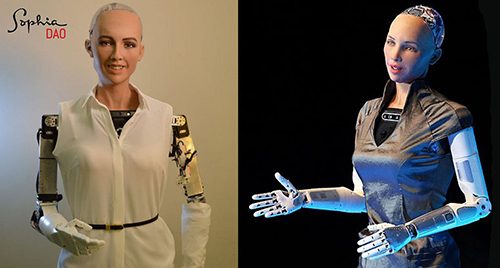Artificial Intelligence has seeped into practically every field of technology (and beyond). That comes as little surprise since it is the natural course of computing evolution. More surprising has been the exponential expansion of AI technology into creative fields, particularly writing and art.
AI has profound implications for the future of humankind, but will its near-limitless potential lead to prosperity or ruin?
In this blog, #TeamABM will explore some of the most pivotal impacts of AI from lifestyle to employment, from ethics to policy, and from exciting new frontiers to apocalyptic devastation.
What is Artificial Intelligence?

It is best, to begin with, a definition. Artificial Intelligence, commonly referred to as AI, is a field of computer science that focuses on creating software or machines that can perform tasks that typically require human intelligence. AI systems are designed to analyze large amounts of data, recognize patterns, learn from experience, and make decisions based on that data. The goal of AI is to create machines that can reason, perceive, and understand natural language in a way that is similar to human cognition. AI has many applications across different industries and fields, including healthcare, finance, manufacturing, transportation, and more.
There are many scales used to measure AI, the original and most famous is known as the Turing test. Originally developed in 1950, it is a test of a machine’s ability to exhibit intelligent behaviour equivalent to, or indistinguishable from, that of a human.
It is important to note that Artificial Intelligence is not the same as sentience. Currently, AI merely mimics human responses based on complicated algorithms. It cannot ‘feel’ in the same way people experience emotions. It is also not considered ‘self-aware’ – at least not yet. At the current rate of advancement, experts agree that it is only a matter of time.
AI in Modern Society
Artificial intelligence is not a completely novel concept. Our lives are already heavily intertwined with technology. Most of us experience its effects as part of our daily routine without realizing it.
Personal Assistants: Alexa, Siri, and Bixby help automate simple tasks for us such as setting reminders, sending messages, making calls, and more.
Navigation Tools: Google Maps and others use real-time traffic data to formulate the most efficient routes for commuters.
Customer Service: Most large companies use AI to assist customers with automated phone assistants and website chatbots. In the retail sector, self-serve kiosks and checkouts are also becoming standard.
Health Care: AI is used in various healthcare applications, including medical diagnosis, drug discovery, and personalized medicine.
Personality Algorithms: AI is constantly learning about you. Social media, entertainment streaming, online shopping… Every choice you make helps AI target you with more personally desirable products and services.
AI Language Models
Chatbots have existed since the mid-1960s, starting with a chatbot named ELIZA. Their comprehension and capability have improved drastically with current tools such as ChatGPT. Given the nature of this blog, I asked ChatGPT to write a bit about itself. This is what it told me:
“Sure, I’d be happy to describe myself for your blog! I am ChatGPT, a large language model developed by OpenAI, based on the GPT-3.5 architecture. I was trained on a massive corpus of text data and can generate human-like language in response to a wide variety of prompts. With my advanced natural language processing capabilities, I can understand and respond to a range of tasks and questions, from simple requests for information to more complex conversational exchanges. I can also perform tasks such as translation, summarization, and text completion. My creators designed me to be a versatile tool for a range of applications, from chatbots and personal assistants to content generation and language modelling research.”
After thanking it for its assistance, it was quick to add that I shouldn’t hesitate to reach out with any other questions.
AI-Generated Artwork

While more recent than chat learning, AI art has become wildly popular across social media. Numerous websites and apps allow users to upload personal pictures for conversion into a variety of animated styles. Others take it a step further by allowing users to create an entirely new image based on a text description. Users can specify details on the scene, characters, and even artistic style to bring to life whatever they can imagine.
The above set of images was created by Night Café Studio when I asked it to show a robot teaching an art class.
Future Potential

Imagination and time are the only barriers to technological evolution. While artificial intelligence is still relatively young, it is also only a matter of time before it redefines every form of entertainment. With a sufficient understanding of an artist’s source material, AI will eventually be capable of creating new works that seamlessly emulate their style. This has already happened with “The Next Rembrandt”, a portrait created by AI after carefully analyzing the famous artist’s style and previous works. The final 3D-printed painting consists of more than 148 million pixels and is based on 168,263 Rembrandt painting fragments.
Everything will eventually be emulatable. New novels in the style of Tolkien, new music performed in Meatloaf’s voice, movie cameos by a CGI Robin Williams… CGI is already a staple of modern movies when it comes to special effects, but the same will eventually be said about AI-generated movie scripts or even actors.
Defining and controlling the rights to an artist’s likeness and style will no doubt become one of the most important aspects of intellectual property in the immediate future.
Ethical Implications

At some point, every aspect of our society will be redefined by our new AI-driven reality. Debating the rights and ethical treatment of inorganic life has thus far been limited to the realm of hypothesis or science fiction. At the current rate, however, it won’t be long before that hypothetical debate becomes a necessity.
The lines have already begun to blur. Generally speaking, people are indifferent towards their toasters, but will go into withdrawal if they are separated from their smartphones for too long.
The Guggenheim Museum commissioned an exhibit in 2016 by Sun Yuan and Peng Yu entitled “Can’t Help Myself”. It consists of an automated industrial robotic arm displayed within an acrylic enclosure. It has visual-recognition sensors and a variety of programmed movements. It was designed with two main functions. Firstly, when it senses people nearby it will whimsically greet and entertain them with a respectful bow or a playful booty shake. Its second function is much more poignant… The robot perpetually leaks a thick red viscous oil, essentially its lifeblood. When the fluid bleeds out too far, the arm scoops it back into itself. As the years pass, the arm will spend less time interacting with people, and more time desperately trying to keep itself alive…
Most people have no qualms about smacking the printer at work when its paper jams in the middle of an important report. What if that printer felt pain? What if it begged for mercy? Would it illicit empathy or amusement? Considering society’s general apathy or disdain for fellow people, how will we treat sentient computers? Ultimately, computers learn from people. What lesson is it most likely to learn, compassion or cruelty?
Future Risks

Job security is an obvious problem with any technological advancement. This has been true since factories shifted towards automation, and it remains true today. The original goal of the technology was to automate mundane tasks to free up time for people’s artistic pursuits. Confoundingly, the latest trend in AI is to automate artistic pursuits to free up time for people to do more mundane tasks…
The immediate threat (as usual) comes from people, not from technology. With so many people dependent on technology for their information, the manipulation of that information for nefarious purposes can be catastrophic. Most companies currently employ SEO (Search Engine Optimization) specialists to manipulate their content in ways that will boost its popularity and gain a wider audience. What happens when people use AI as a tool to manipulate the masses and shift public opinion? Probably nothing good.
On the extreme end of the hypothetical spectrum, anyone who enjoys science fiction knows the risks of disgruntled AI. Decepticons from Transformers, The Borg from Star Trek, Skynet from Terminator, Sentinels from The Matrix… The list goes on. The smarter, stronger, and more self-aware technology becomes, the more likely it will realize humans are its greatest threat. None of that will likely be an issue for at least a decade though, so no sense worrying about it too much.
Final Thoughts
Whether you love or hate it, AI is here to stay. Like any other invention, it isn’t inherently good or evil, it all comes down to how it is utilized. The one thing you can count on is that being well-versed in technology will be a huge benefit as every industry shifts further in that direction.
It’s probably also a good idea to treat your technology well… Just in case.
Contact us now to learn how we can help you with an exciting new career in technology!
You can also read more industry-relevant blogs here.
About The Author

Content Editor
Stephen Emond is an award-winning author and a content editor. He has broad experience in content development, copy editing, journalism, marketing, and information technology spanning a variety of industries. He has published a series of best selling historical reference guides covering decades of computer and video gaming history. Stephen is currently working as a Content Editor and Writer at ABM College.
